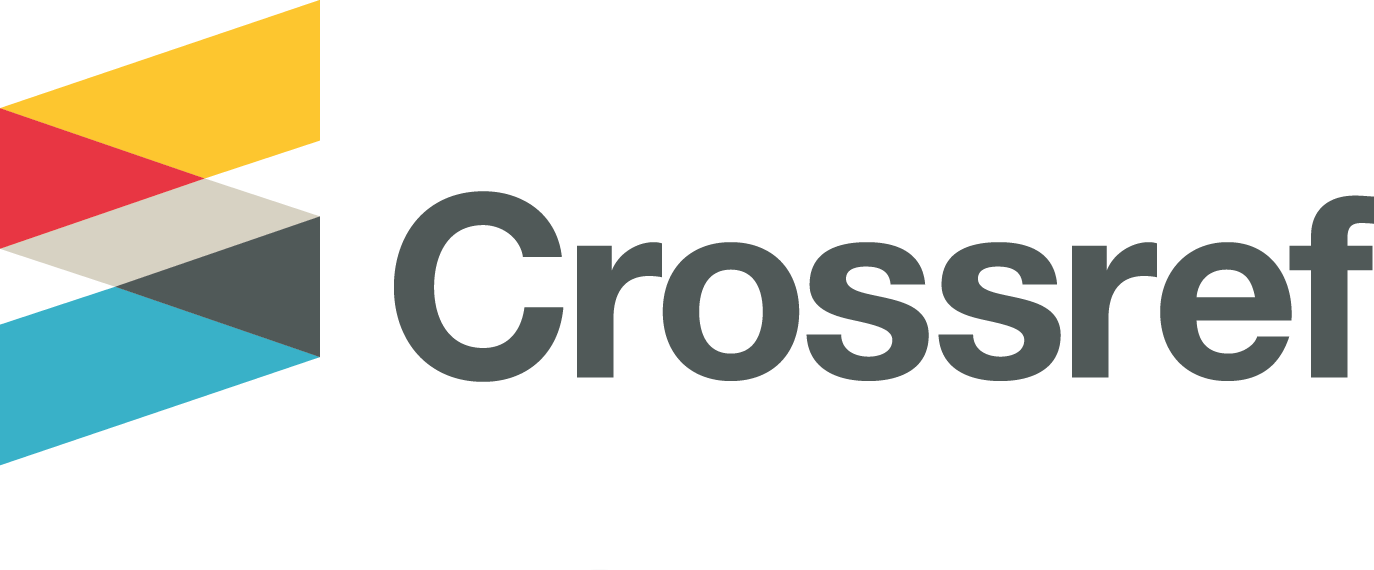Psychometric properties of the Healthy and Unhealthy Eating Behavior Scale (HUEBS) among Indonesian college students based on the Rasch model
Abstract
Eating behavior is a crucial aspect of human life, encompassing multiple dimensions. Unfortunately, no Indonesian-language instrument is specifically designed to measure healthy and unhealthy eating behaviors. This study aimed to evaluate the validity and reliability of the Indonesian version of the Healthy and Unhealthy Eating Behavior Scale (HUEBS) among 210 first-year undergraduate students. The data collection used a random sampling technique among first-year university students in one of the private universities in Indonesia. The HUEBS consists of two subscales: healthy eating behavior and unhealthy eating behavior. The Rasch model was employed to examine the scale's psychometric properties, including unidimensional, rating scale functioning, item fit, and differential item functioning (DIF). The results indicated that all items met the recommended fit criteria (infit and outfit MNSQ) and demonstrated adequate point-measure correlations (> 0.30). The 7-point rating scale functioned optimally and consistently. Item and person reliability values (.99 and .85–.86, respectively) were categorized as good to excellent, supporting the scale’s sensitivity in distinguishing levels of eating behavior. The results show that HUEBS can measure healthy eating and unhealthy eating behavior among university students and can be used as a basis for intervention related to lifestyle.
Perilaku makan merupakan aspek penting dalam kehidupan manusia. Namun, hingga saat ini belum tersedia instrumen berbahasa Indonesia yang secara khusus dirancang untuk mengukur perilaku makan sehat dan tidak sehat. Penelitian ini bertujuan untuk mengevaluasi validitas dan reliabilitas versi Indonesia dari Healthy and Unhealthy Eating Behavior Scale (HUEBS) pada 210 mahasiswa sarjana tahun pertama. Pengumpulan data dilakukan dengan menggunakan teknik random sampling pada mahasiswa tahun pertama di salah satu universitas swasta di Indonesia. HUEBS terdiri atas dua subskala, yaitu perilaku makan sehat dan perilaku makan tidak sehat. Model Rasch digunakan untuk menguji karakteristik psikometris skala, meliputi unidimensionalitas, fungsi skala penilaian, item fit, serta differential item functioning (DIF). Hasil penelitian menunjukkan bahwa seluruh butir memenuhi kriteria kelayakan (infit dan outfit MNSQ) serta memiliki korelasi point-measure yang memadai (> 0,30). Skala penilaian 7 poin berfungsi secara optimal dan konsisten. Nilai reliabilitas butir (.99) maupun reliabilitas responden (.85–.86) termasuk dalam kategori baik hingga sangat baik, sehingga mendukung sensitivitas skala dalam membedakan tingkat perilaku makan. Dengan demikian, HUEBS terbukti mampu mengukur perilaku makan sehat dan tidak sehat pada mahasiswa, serta dapat dijadikan dasar bagi pengembangan intervensi terkait gaya hidup.
Keywords
Full Text:
FULL TEXTReferences
Abdurrahman, F. (2014). Faktor-faktor pendorong perilaku diet tidak sehat pada wanita usia dewasa awal studi kasus pada mahasiswa universitas mulawarman. JurnalImiahPsikologiPsikoborneo, 2(1), 23–27.
AL-Dalaeen, A., Batarseh, N., Al-Bashabsheh, Z., ALjeradat, B. G., Batarseh, D., & Karablieh, A. (2024). Stress levels and eating behavior among university students in Jordan: A cross-sectional study. Journal of Education and Health Promotion, 13, 285.
Andrich, D. (1978). A rating formulation for ordered response categories. Psychometrika, 43(4), 561–573. https://doi.org/10.1007/BF02293814
Ayyıldız, F., Akbulut, G., Karaçil Ermumcu, M. Ş., & Acar Tek, N. (2023). Emotional and intuitive eating: an emerging approach to eating behaviours related to obesity. JournalofNutritionalScience, 12(19).
BadanPusatStatistik. (2021). Prevalensi Obesitas Pada Penduduk Umur > 18 Tahun, 2016-2018.
Bannigan, K., & Watson, R. (2009). Reliability and validity in a nutshell. Journal of Clinical Nursing, 18(23), 3237–3243.
Beaton, D. E., Bombardier, C., Guillemin, F., & Ferraz, M. (2000). Guidelines for the Process of Cross-Cultural Adaptation of Self-Report Measures. Spine, 25(4), 3186–3191.
Benedetti, TT. R. B., Christofoletti, M., Quinaud, R. T., Ribeiro, C. G., Konrad, L. M., Carvalho, H. M., & Jomori, M. M. (2023). Food consumption scale validation in VAMOS Program: a proposal to assess eating behavior changes in Brazil. Revista Ciência & Saúde Coletiva, 28(2).
Boone, J. W. (2016). Rasch Analysis for Instrument Development: Why, When, and How? CBE LifeSciencesEducation, 15(4).
Boone, W. J. (2016). Rasch analysis for instrument development: Why, when, and how? CBE—Life Sciences Education, 15(4), rm4. https://doi.org/10.1187/cbe.16-04-0148
Boone, W. J., & Staver, J. R. (2020). Advances in Rasch analyses in the human sciences. Springer. https://doi.org/10.1007/978-3-030-43420-5
Boone, W. J., Staver, J. R., & Yale, M. S. (2014). Rasch analysis in the human sciences. Springer Science & Business Media. https://doi.org/10.1007/978-94-007-6857-4
Brentani, E., & Golia, S. (2007). Unidimensionality in the Rasch model: how to detect and interpret. Statistica, 67(3).
Cahyani, A. D., Iskandarsyah, A., Cahyadi, S., & Srisayekti, W. (2020). Using Confirmatory Factor Analysis to Evaluate Construct Validity of the Indonesian Palatable Eating Motives Scale (I-PEMS). TheOpenPsychologyJournal, 13(1).
Chen, Y., Liu, X., Yan, N., Jia, W., Fan, Y., Yan, H., & Ma, L. (2020). Higher Academic Stress Was Associated with Increased Risk of Overweight and Obesity among College Students in China. International Journal of Environmental Research and Public Health, 17(15), 5559.
Christensen, K. B., Makransky, G., & Horton, M. (2017). Critical Values for Yen’s Q3: Identification of Local Dependence in the Rasch Model Using Residual Correlations. Applied Psychological Measurement, 41(3), 178–194. https://doi.org/10.1177/0146621616677520
Clauser, B., & Linacre, J. M. (1999). Relating cronbach and rasch reliabilities. Rasch Measurement Transactions, 13(2), 696.
Çoker, E. N., Jebb, S. A., Stewart, C., Clark, M., & Pechey, R. (2022). Perceptions of social norms around healthy and environmentally-friendly food choices: Linking the role of referent groups to behavior. Frontiers in Psychology, 13.
Czepczor-Bernat, K., Modrzejewska, A., Modrzejewska, J., & Majzner, R. (2021). Comparison of Food-Based and Music-Based Regulatory Strategies for (Un)Healthy Eating, Depression, Anxiety and Stress. Nutrients, 14(1), 187. https://doi.org/10.3390/nu14010187
Dalton, D. E. (2024). Emotional Eating in College Students: Associations with Coping and Healthy Eating Motivators and Barriers. International Journal of Behavioral Medicine, 31(4), 536–572.
de Oliveira Penaforte, F. R., Matta, N. C., & Japur, C. C. (2016). Association between stress and eating behavior in college students. Demetra: Food, Nutrition & Health, 11(1), 225.
Deliens, T., Clarys, P., & De Bordeaudhuij, I. (2014). Determinants of eating behaviour in university students: a qualitative study using focus group discussions. BMCPublicHealth, 14.
Devi, S. (2014). Adaptasi Tes Sikap Makan-26 (Eating Attitude Test-26) [Skripsi]. UniversitasAirlangga.
Djekic, I., Bartkiene, E., Szűcs, V., Tarcea, M., & Klarin, I. (2021). Cultural dimensions associated with food choice: A survey based multi-country study. International Journal of Gastronomy and Food Science, 26, 100414.
Duncan, P. W., Bode, R. K., Lai, S. M., & Perera, S. (2003). Rasch analysis of a new stroke-specific outcome scale: The stroke impact scale. Archives of Physical Medicine and Rehabilitation, 84(7), 950–963. https://doi.org/10.1016/S0003-9993(03)00035-2
ElBarazi, A., & Tikamdas, R. (2024). Association between university student junk food consumption and mental health. Nutrition and Health, 30(4), 861–867.
Ertem, Y. M., & Karakaş, M. (2021). Relationship between emotional eating and coping with stress of nursing students. Perspective in Psychiatric Care, 57(2), 433–442.
Fisher, W. P. J. (2007). Rating scale instrument quality criteria. Rasch Measurement Transactions, 21(1) p. 1095. http://www.rasch.org/rmt/rmt211m.htm
Frick, H., Strobl, C., & Zeileis, A. (2014). Rasch Mixture Models for DIF Detection: A Comparison of Old and New Score Specifications. Educational and Psychological Measurement, 75(2), 208–234.
Government of Canada. (2025, March 4). Canada’s food guide. Government of Canada.
Guertin, C., Pelletier, L., & Pope, P. (2020). The validation of the Healthy and Unhealthy Eating Behavior Scale (HUEBS): Examining the interplay between stages of change and motivation and their association with healthy and unhealthy eating behaviors and physical health. Appetite, 144.
Konttinen, H. (2020). Emotional eating and obesity in adults: the role of depression, sleep and genes. Proceedings of the Nutrition Society, 79(3), 283–289.
Kurnia, A., & Ramadhani, A. (2021). Pengaruh Hardiness dan Dukungan Sosial Terhadap Stres Akademik Mahasiswa. JurnalIlmiahPsikologiPsikoborneo, 9(3), 657–666.
Kusbiantari, D., Fitriana, E., & Srisayekti, W. (2020). Psychometric Properties of Binge Eating Scale Indonesian Version. The OpenPsychologyJournal, 13.
LaCaille Lara. (2020). Eating Behavior. Encyclopedia of Behavioral Medicine, 711–712.
Lanoye, A., Brown, L. , K., & LaRose, G. , J. (2017). The Transition into Young Adulthood: A Critical Period for Weight Control. Currentdiabetesreports, 17(11).
Lauzon‐Guillain, B. De, Romon, M., Musher-Eizenman, D., Heude, B., Basdevant, A., & Charles, M. A. (2008). Cognitive restraint, uncontrolled eating and emotional eating: correlations between parent and adolescent. MaternalChildNutrition, 5(2), 171–178.
Lawshe, C. H. (1975). A quantitative approach to content validity. Personnel Psychology, 28(4), 563–575.
Linacre, J. M. (1997). KR-20/Cronbach Alpha or Rasch person reliability: Which tells the “truth.” Rasch Measurement Transactions, 11(3), 580–581.
Linacre, J. M. (1998). Structure in Rasch residuals: Why principal components analysis (PCA)? Rasch Measurement Transactions, 12(2), 636.
Linacre, J. M. (1999). Investigating rating scale category utility. Journal of Outcome Measurement, 3(2), 103–122.
Linacre, J. M. (2004). Optimizing rating scale category effectiveness. In E. V Smith Jr. & R. M. Smith (Eds.), Introduction to Rasch measurement: Theory, model and application (pp. 258–278). JAM Press.
Linacre, J. M. (2008a). Winsteps® Rasch measurement computer program user’s guide. winsteps.com.
Linacre, J. M. (2008b). Winsteps. (Version 3.65.0) [Computer Software]. Chicago: Winsteps.com.
Maghfira, A. M., & Pudjiati, R. S. R. (2023). Faktor yang Berperan dalam Pembentukan Konsep Makanan pada Masa Kanak-kanak Awal. Psikoborneo JurnalIlmiahPsikologi, 11(2), 180–185.
Mandiri, D. A. (2015). Uji Validitas Konstruk Pada Alat Ukur Eating Attitudes Test (EAT-26). JurnalPengukuranPsikologidanPendidikanIndonesia, 4(4).
Mantel, N. (1963). Chi-Square Tests with One Degree of Freedom; Extensions of the Mantel-Haenszel Procedure. Journal of the American Statistical Association, 58(303), 690–700. https://doi.org/10.1080/01621459.1963.10500879
Mantel, N., & Haenszel, W. (1959). Statistical aspects of the analysis of data from retrospective studies of disease. JNCI: Journal of the National Cancer Institute, 22(4), 19–748. https://doi.org/10.1093/jnci/22.4.719
Maymon, R., & Hall, C. N. (2021). A Review of First-Year Student Stress and Social Support. SocialSciences, 10(12).
Michels, N., Man, T., Vinck, B., & Verbeyst, L. (2020). Dietary changes and its psychosocial moderators during the university examination period. European Journal of Nutrition, 59(1), 273–286. https://doi.org/10.1007/s00394-019-01906-9
Muliadi, R., Jatnika, R., Hanami, Y., & Adishesa, S. M. (2025). Evaluation of an environmentally friendly behavior scale among Indonesian university students using the Rasch model. ActaPsychologica, 105087.
Ogden Jane. (2023). Health Psychology (Summers Beth & Jones Hannah, Eds.; 7th ed.). Open University Press, Mc Graw Hill.
Pertiwi, G. A. (2020). Pengaruh Stres Akademik dan Manajemen Waktu Terhadap Prokrastinasi Akademik. JurnalIlmiahPsikologiPsikoborneo, 8(4), 738–749.
Pitt Adele, Oprescu Florin, & Tapia Geraldine. (2017). An exploratory study of students’ weekly stress levels and sources of stress during the semester. SageJournals, 19(1).
Polit, F., Beck, T., & Owen, V. S. (2007). Is the CVI an acceptable indicator of content validity? Appraisal and recommendations. ResearchinNursing&Health, 30(4), 459–467.
Putri, P. K., Risnawati, E., & Avati, P. (2022). Stress Akademik Mahasiswa Semester Awal dan Mahasiswa Semester Akhir: Studi Komparatif dalam Situasi Pembelajaran Daring. Jurnal Psikologi : Media Ilmiah Psikologi, 20(2). https://doi.org/10.47007/jpsi.v20i2.232
Rachmi, N. C., Jusril, H., Ariawan, I., Beal, T., & Sutrisna, A. (2020). Eating behaviour of Indonesian adolescents: a systematic review of the literature. PublicHealthNutrition, 24(S2), 84–97.
Rasch Measurement Forum. (n.d.). Rating Scale Instrument Quality Criteria.
Rui-Hui, M. (2015). Fast-food Consumption among College Students Based on Cost and Thermal Analysis. AdvancedJournalofFoodScienceandTechnology, 8(2), 122–125.
Schumacker, R. E., & Smith, E. V. (2007). A rasch perspective. Educational and Psychological Measurement, 67(3), 394–409. https://doi.org/10.1177/0013164406294776
Shehata, W. M., & Abdeldaim, D. E. (2023). Emotional eating in relation to psychological stress during COVID-19 pandemic: a cross-sectional study in faculty of medicine, Tanta University, Egypt. BMCPublicHealth, 23.
Smith Jr, E. V. (2001). Evidence for the reliability of measures and validity of measure interpretation: a Rasch measurement perspective. Journal of Applied Measurement, 2(3), 281–311.
Stok, M. F., Renner, B., Clarys, P., Lien, N., Lakerveld, J., & Deliens, T. (2018). Understanding Eating Behavior during the Transition from Adolescence to Young Adulthood: A Literature Review and Perspective on Future Research Directions. Nutrients, 10(6).
Tang, S., Li, X., Wang, M., & Sha, L. (2023). Nutrition literacy mediates the relationship between self-efficacy and eating behavior in young tuberculosis patients: A cross-sectional study. Preventive Medicine Reports, 2023.
Uzhova, I., Fuster, V., & Fernández-Ortiz, A. (2017). The Importance of Breakfast in Atherosclerosis Disease: Insights From the PESA Study. Journal of the American College of Cardiology, 70(15), 1833–1842.
Wright, B. D., & Linacre, J. M. (1994). Reasonable mean-square fit values. Rasch Measurement Transactions, 8(3), 370.
Wright, B. D., & Masters, G. N. (1982). Rating scale analysis. MESA Press.
Wright, B. D., & Masters, G. N. (2002). Number of Person or Item Strata. Rasch Measurement Transactions, 16(3), 888.
Yen, W. M. (1984). Effects of Local Item Dependence on the Fit and Equating Performance of the Three-Parameter Logistic Model. Applied Psychological Measurement, 8(2), 125–145. https://doi.org/10.1177/014662168400800201
Zare, H., Rahimi, H., Omidi, A., Nematolahi, F., & Sharifi, N. (2024). Relationship between emotional eating and nutritional intake in adult women with overweight and obesity: a cross-sectional study. NurtitionJournal, 23(129).
Zwick, R., Thayer, D. T., & Lewis, C. (1999). An empirical Bayes approach to Mantel‐Haenszel DIF analysis. Journal of Educational Measurement, 36(1), 1–28. https://doi.org/10.1111/j.1745-3984.1999.tb00543.x
DOI: http://dx.doi.org/10.30872/psikoborneo.v13i4.20523
Refbacks
- There are currently no refbacks.
Copyright (c) 2025 Tri Sasanti Megapratiwi, Wilis Srisayekti, Asteria Devy Kumalasari, Rahmad Muliadi

This work is licensed under a Creative Commons Attribution-ShareAlike 4.0 International License.
PSIKOBORNEO: Jurnal Ilmiah Psikologi Published by Faculty of Social and Political Siences, University of Mulawarman, Samarinda, East Kalimantan and This work is licensed under a Creative Commons Attribution-ShareAlike 4.0 International License.
________________________________________
PSIKOBORNEO: Jurnal Ilmiah Psikologi
Department of Psychology
Faculty of Social and Political Siences, University of Mulawarman
Jl. Muara Muntai Kampus Gn. Kelua Samarinda 75411
Phone: +62 813 35350368
E-Mail: psikoborneo@gmail.com / psikoborneo@fisip.unmul.ac.id
















